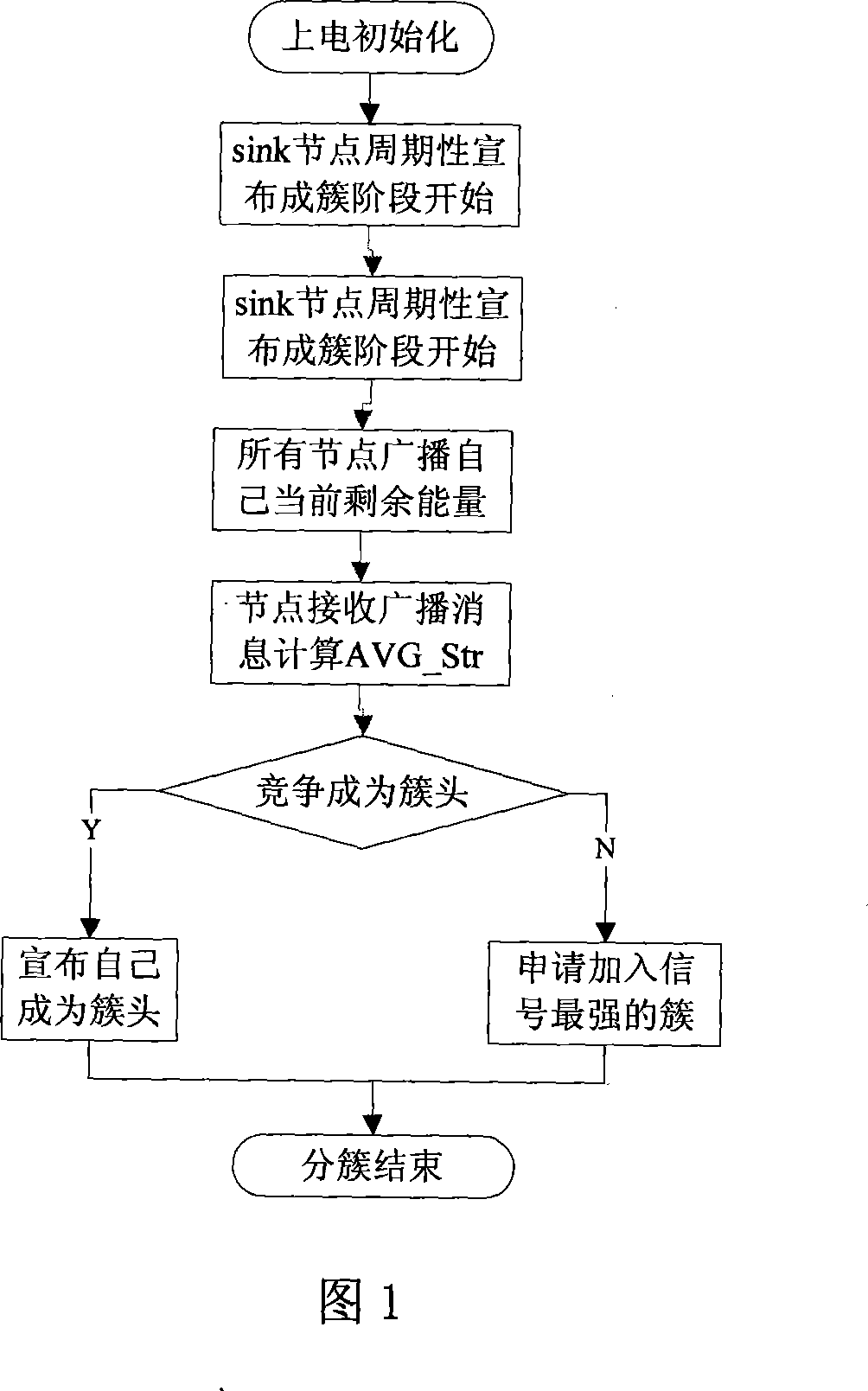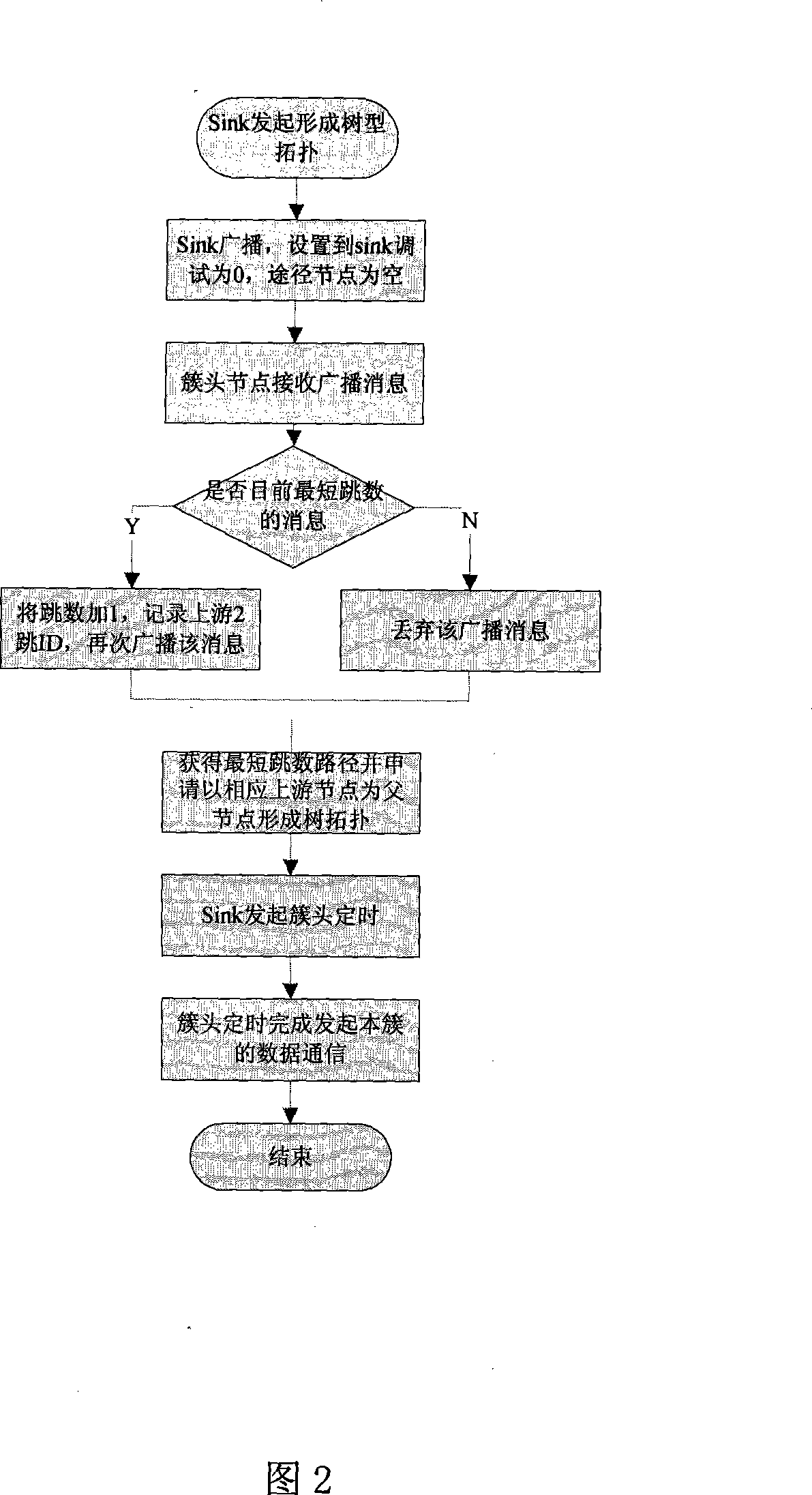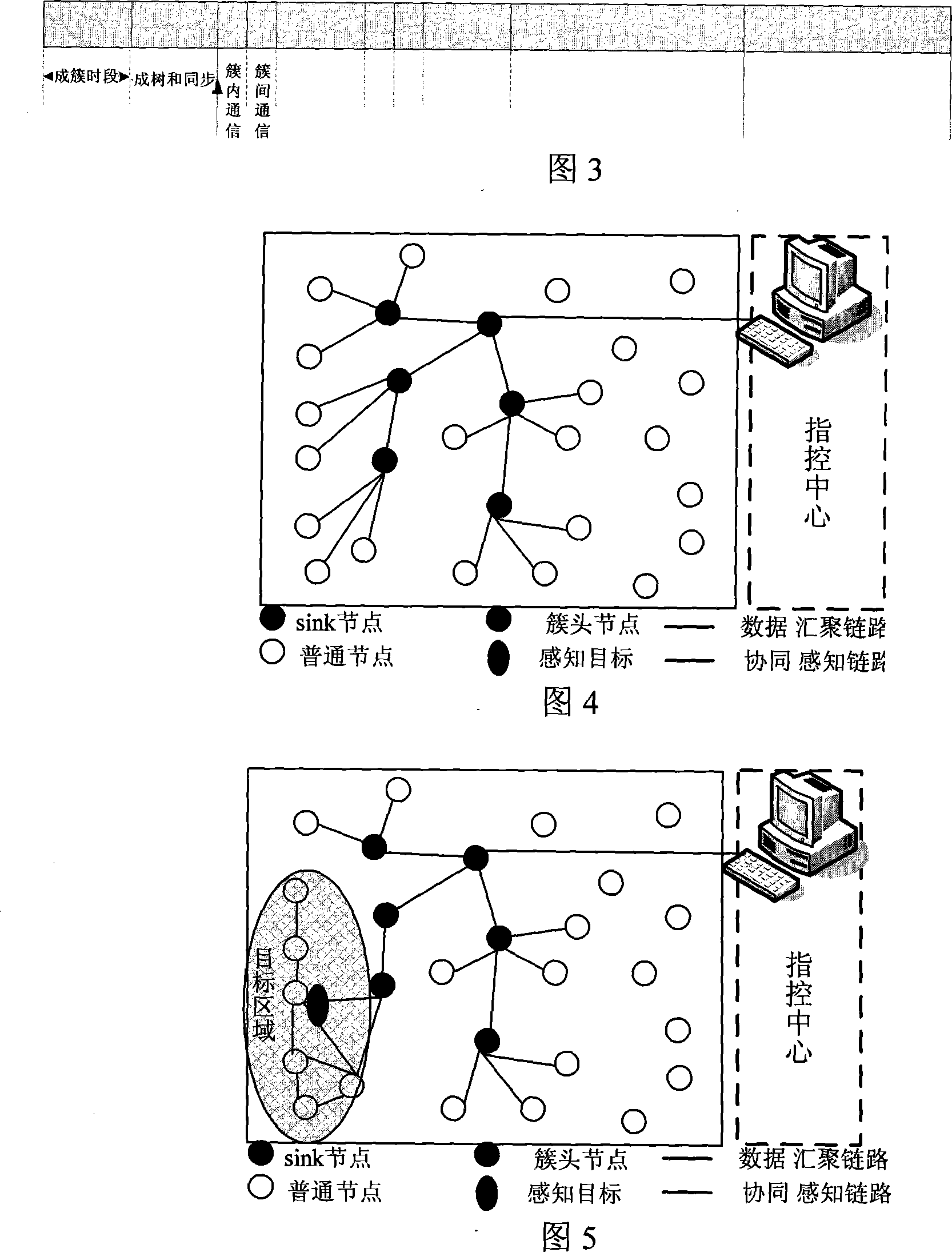A valid wireless sensor network architecture for collaborative energy sensing
A wireless sensor network and collaborative sensing technology, applied in the field of wireless sensor network, can solve the problems of short service life cycle and high power consumption of wireless sensor network network, and achieve the effect of reducing energy consumption and ensuring flexibility
- Summary
- Abstract
- Description
- Claims
- Application Information
AI Technical Summary
Problems solved by technology
Method used
Image
Examples
Embodiment Construction
[0018] The present invention will be further described below in conjunction with the accompanying drawings and embodiments.
[0019] As shown in the figure, a wireless sensor network architecture with efficient cooperative sensing energy of the present invention specifically includes the following periodic steps:
[0020] A. Clustering, determine each node to become a cluster head or a cluster member;
[0021] B. The cluster heads form a tree topology to reach the sink node, and complete the synchronization between the cluster heads. The cluster head node collects the data in the cluster and forwards it to the sink node in multiple hops.
[0022] C. When multi-sensor cooperative perception of the target is required, the relevant nodes near the target enter the cooperative sensing state and exchange information on another channel. The nodes use data-centric routing to complete target positioning and tracking.
[0023] As a preferred mode of the present invention, the step A sp...
PUM
 Login to View More
Login to View More Abstract
Description
Claims
Application Information
 Login to View More
Login to View More - R&D
- Intellectual Property
- Life Sciences
- Materials
- Tech Scout
- Unparalleled Data Quality
- Higher Quality Content
- 60% Fewer Hallucinations
Browse by: Latest US Patents, China's latest patents, Technical Efficacy Thesaurus, Application Domain, Technology Topic, Popular Technical Reports.
© 2025 PatSnap. All rights reserved.Legal|Privacy policy|Modern Slavery Act Transparency Statement|Sitemap|About US| Contact US: help@patsnap.com



